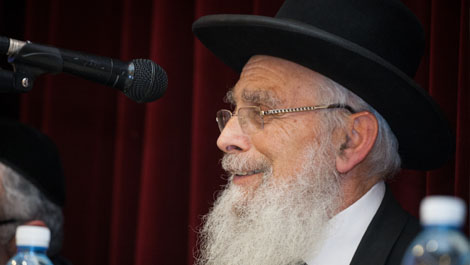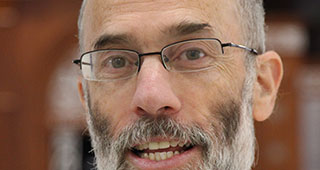Beit Midrash
- Torah Portion and Tanach
- Shmot
- Terumah
- Sections
- Chemdat Yamim
- Parashat Hashavua
In the midst of discussing the completion of the building (Melachim I, 6), the navi paused to encourage Shlomo: "This house that you are building - if you follow in My statutes, My laws you will do, and My commandments you will observe to follow them, I will uphold for you that which I said to your father, David. I will dwell in the midst of Israel, and I will not leave My nation, Israel" (ibid.: 12-13). The pasuk then repeats similar language about the completion of the construction, indicating that the previous p’sukim were inserted to break up the description. The perek ends by saying that the whole job took seven years.
Perek 9 refers to the time that Shlomo completed the building of the Beit Hamikdash and other projects related to his kingdom and again relates Hashem’s exhortation to him. Here, though, along with the positive reinforcement, there is also a stern warning: "If you will turn away, you and your children, from before Me and will not follow My statues... I shall cut off Israel from the face of the Land that I gave to them and the house that I consecrated for My name I shall send from before Me and Israel will be as a parable and a conversation piece to all the nations" (ibid. 9: 6-7). The section is completed with the dating - that it was twenty years that Shlomo had built the house of Hashem and the house of the king.
Apparently the Beit Hamikdash complex was built in two stages. The main part where the service was done was completed in seven years. However, afterward there were additions that included the encompassing region which was the heart of the city, which now served as both the religious and the monarchal center of the nation.
According to a prominent opinion in Chazal, Shlomo’s kingdom itself was broken into two periods. According to Rabbi Yudan (see Kohelet Rabba 1), Shlomo actually ceased to be king for a period in the midst of his reign, after a failure. It is likely that the construction also ceased at that time and when he returned, Hashem warned him that his behavior would have to regain its level if he and his descendants wanted to avoid punishment. Since Shlomo did not remain as faithful as required, Achiya Hashiloni prophesied that much of his kingdom had been decreed to be torn away from his family.
Even Shlomo, who was called "Hashem’s beloved," lost favor and had his rule interrupted and limited. No one has an assurance that whatever leadership he has will last if his behavior does not warrant it.
The Inner Beauty
Rabbi Hillel Mertzbach | 7 Adar 5784

A Youthful Meeting of the Faces
Parashat Terumah
Rabbi Yossef Carmel | 4 Adar 5766

The Mutual Love Between G-d and Israel
Rabbi Moshe Tzuriel | 30 Shvat 5785




















